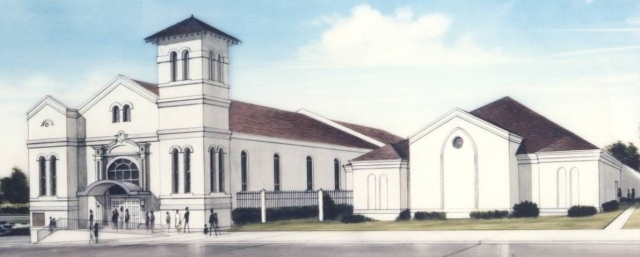Much of the media spent yesterday not getting to the bottom of how the American Ambassador to Libya was assassinated on the anniversary of September 11 terror attacks but, rather, suggesting Mitt Romney was wrong to criticize the Obama administration for how it was handling protests against America.
But Godbeat reporters did a better job than many of their colleagues. In some cases, we saw great work, which I’ll get to. Before I get to that, a note of concern. Basically, any time there is breaking news involving violence, many unsubstantiated claims make their way into reports. Frequently these claims just aren’t true. (For just one example, compare this and this, one of which can not be true.) Probably the biggest problem we saw with that, Godbeat-wise, in this story was the claim that the assassination of the U.S. ambassador and murder of three of his colleagues were in response to the creation of an unbelievably bizarre anti-Islam film.
That belief — which sounds like it is completely untrue — led much of the feeding frenzy to uncover the makers and participants in the video. Now, the video may have played the role of pretext in recent anti-U.S. protests in Egypt, Tunisia and Libya. But the plot is much thicker than this easy explanation would allow. In the case of Libya, this is looking like it was a coordinated attack on the occasion of the anniversary of the 9/11 terror bombings. It might be worth keeping in mind, if one is a savvy religion reporter, that in just the past few days we’ve seen a wave of bombings that killed 92 people in 13 Iraqi cities, a car bomb that killed 11 in Pakistan, a rocket attack in Afghanistan, an assassination attempt on the Yemeni defense minister (that killed 12), an assassination attempt on the Somali president (that killed 8), a suicide attack on a police station in Istanbul … and various other attacks.
That religion story — about the coordinated attack and other attacks — will be much more difficult to report and figure out, particularly from reporters who sit stateside, but it’s unarguably a much more important story that deserves far more coverage. Also, I would certainly hope that the media would be much more interested in figuring out the security breaches that took place in Egypt and Libya than with writing more words on Terry Jones or mysterious filmmakers. Media tend to have narrative frameworks they adopt and report stories to fit that narrative. It can be a dangerous approach.
In this frightening analysis of what happened in Cairo — which suggests the “movie” is pretext at best and that the crowds may have been sent to the embassy as part of a Salafi power play against the Muslim Brotherhood — Middle East expert Lee Smith adds:
The importance [the movie and Jones’ putative involvement] been given in press reports is a telltale sign that the American media are more eager to find fault with fringe American provocateurs than Islamist extremists and killers. The reality is that violent demonstrations in the Muslim world against Western insensitivity to Muslim feelings are rarely held for the reasons publicly stated. More often than not, they’re about political leverage, not civilizational conflict.
But back to the coverage of the video, which was … extensive. Super extremely extensive. I want to highlight a few of the better pieces. On The Media thoroughly analyzed how the “movie” (if it can be called that) seemed to dub in every single reference to religion during post-production. Multiple outlets interviewed people who were in the film and their reports confirm that the offending lines were added in post production. CNN has a great story on that. As for the identity of “Sam Bacile,” who had claimed various identities and was involved with the film, many reporters exposed flaws in his story. Jeffrey Goldberg of The Atlantic reported that Bacile’s claim to be an Israeli Jew was strenuously disputed.
Everything about the film and its publication was scrutinized. David Kirkpatrick of the New York Times gave an excellent run-down of the origins of the movie, including, “It is unclear whether a full movie even exists.”
In another part of the Times site, a blogger explained a Coptic angle:
One of the reasons that the anti-Islam film trailer so enraged conservative Muslims in Egypt was that reports in the Egyptian media suggested that it was the work of Morris Sadek, an Egyptian-born Coptic Christian ally of Terry Jones, the Florida pastor known for Koran-burning. So far, however, all that is known for certain is that Mr. Sadek played a small role in publicizing the video, by passing on a link to the English-language trailer in a rambling blog post, an e-mail and a message to his Twitter followers, who numbered less than 80 as of this morning. Mainstream Copts have denounced him as a fringe figure who does not represent their community.
For a sense of how marginal a figure he appears to be, see this video of Mr. Sadek, wearing a cowboy hat and brandishing a cross, a Bible and an American flag during an anti-Islam protest outside the National Press Club in Washington on Sept. 10, 2010. The clip shows Mr. Sadek and five or six other protesters denouncing President Obama and Secretary of State Hillary Clinton and chanting: “Muslims burn our Bible in Egypt!”
That same blogger explained that ignorance of the United States’ expansive protections for speech and religious expression played a role in a small protest in Tunisia.
By the end of the day, the Associated Press, which had multiple reports on the filmmaker, seemed to have figured out the mystery. And it was a really good and totally weird mystery.
So good work, Godbeat folks. Of course, the fact that the movie played either no role or the role of pretext in the 9/11 attacks means that this may have been over-covered a tad. OK, way over-covered. I hope we see even a fraction of the same enthusiasm for uncovering every detail of how the attack in Libya happened — a major victory for whoever did it — and what is going on in the streets of Egypt, Tunisia and, now, Yemen, as we do Terry Jones and Nakoula Nakoula.
Forest video image via Shutterstock.











